PERISCOPE
Of HIV and stigma, closets and clay – the fabulous and bejewelled art of coming out… twice
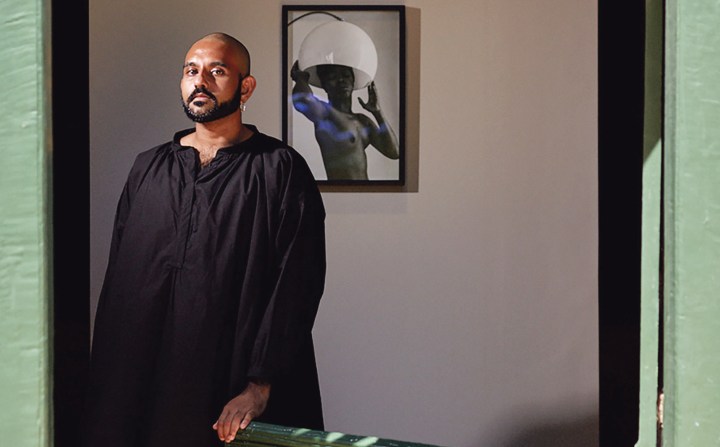
‘It’s a survival tactic. But closets are for clothes, not people!’ says jeweller and sculptor Githan Coopoo, who first came out of the gay closet, then the HIV closet. Between sips of rooibos tea, he reflects on what ‘coming out of the closet’ means.
‘Essentially it’s kind of a survival tactic to be closeted, to have those walls up around you,” says Githan Coopoo, during an interview at his ceramic studio in Cape Town.
“It’s part of a journey of self-acceptance, learning to find some semblance of peace within oneself.”
For 27-year-old Coopoo, coming out of the closet wasn’t a light-bulb moment, he says, more a string of affirmations. “You are slowly affirmed,” he explains. “Maybe you don’t want to believe the first affirmation. So you wait for another one. Then it comes, and you might be slightly more taken by the notion. But you still don’t really take the whole thing on board until eventually you get to a point where it’s no longer possible to avoid these affirmations.”
Within his own home context, Coopoo refers to emotional privilege.
“We talk about privilege, economic privilege, and so on. But there are various types of privilege, including emotional privilege. My parents were very liberal and supportive. When I was 19, I brought a boy home saying this is so-and-so and he’s staying over. And he did. And my parents were fine with it. I have an older brother who is also gay – perhaps coming out for him was more difficult than it was for me.”
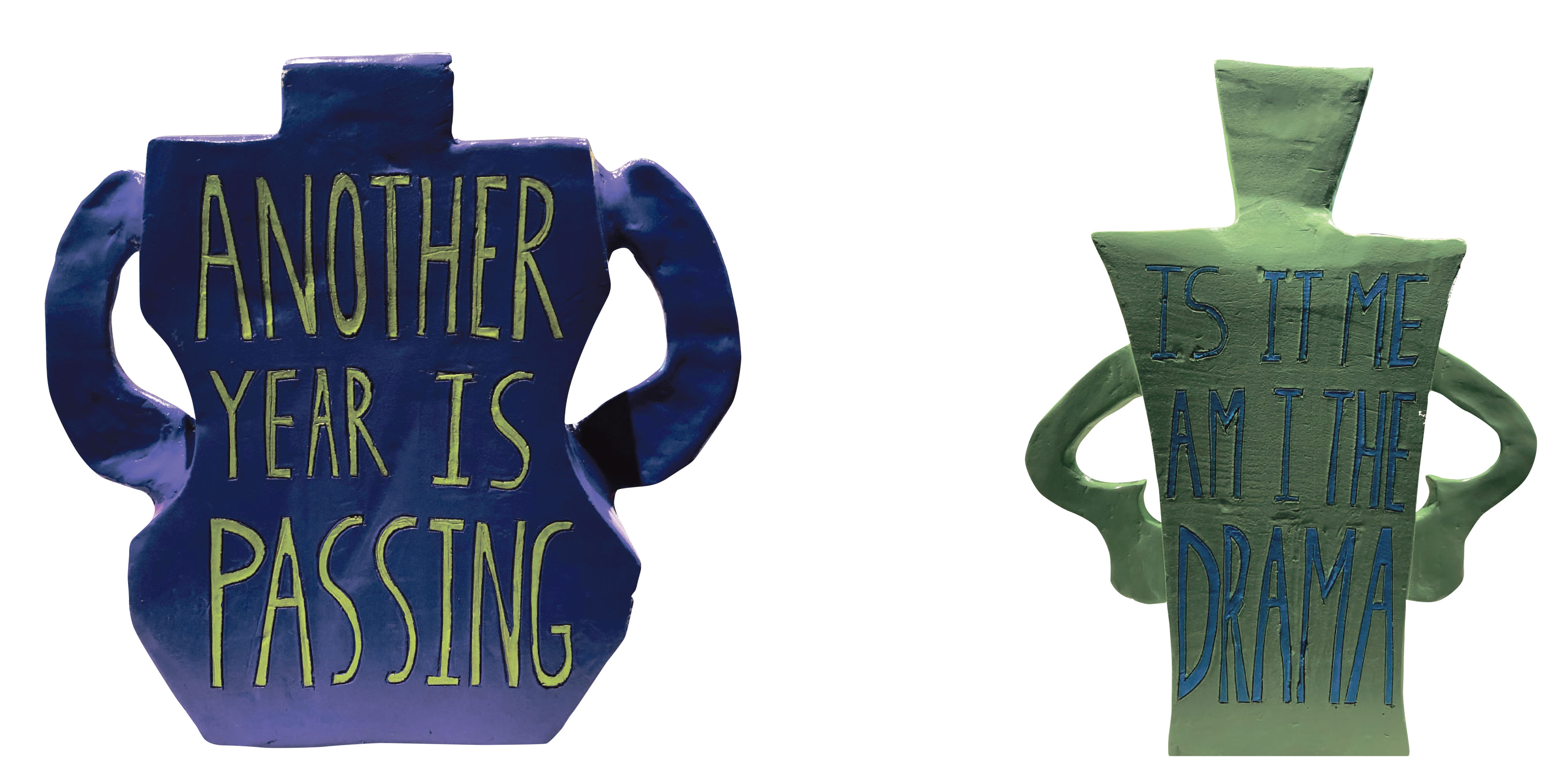
(Githen Coopoo, Digital Catalogue)
Coopoo describes being diagnosed with HIV at the age of 24 as “having a closet thrust upon you”. He recalls: “You now have the choice of disclosing or not disclosing your status. I mean, I remember the first thing I thought when I was diagnosed was, well, I’m probably never going to have sex again. But then I learnt more and realised that there’s absolutely nothing wrong with me, which is why I decided to publicly come out as HIV positive.”
On Halloween 2019, nearly a year after being diagnosed with HIV, Coopoo dressed in a giant red AIDS ribbon with internal boning and frilled edges and went to a party with friends.
He recollects the evening in an essay, “P(r)EP Talk”, included in Touch: Sex, Sexuality and Sensuality, an anthology published in June 2021 to coincide with Pride month, in recognition of LGBTQI+ rights.
He writes: “It was my way of saying, ‘My costume tonight isn’t actually a costume, it’s me, and I’m fabulous!’ The next morning, I shared a photo on my Instagram with a caption that reads: ‘Closets are for clothes, not people! I am HIV positive and proud.’ The post was shared widely and met with great enthusiasm and love.”
Coopoo’s Instagram feed is a vivid chronicle of his ceramic art and self-expression through fashion. Photos show him in combinations of traditional Indian attire, lingerie and slip-on sandals. His bio reads: “Clay is the queer agenda. Jewellery and sculpture. Addressing HIV and AIDS stigma in South Africa.”
Despite his public discourse on living positively with HIV, Coopoo does not consider himself an activist. His other big passion is clay – particularly air-drying clay (clay that is not baked in a kiln). “I love the fragility aspect of it. I love that it remains porous to the world. I love that its fragility and sensitivity is something that can mock and mimic the capacities I have within myself as an individual.”
His pieces will be on display at FNB Art Joburg in September and at Everard Read’s Johannesburg gallery in October.
Read in Daily Maverick: “Artist Felix González-Torres: A meditation on mortality”
Coopoo’s ceramic studio is in a garage adjoining his parents’ home in Newlands, Cape Town. During our interview, clay shapes – circles and rounded half-moons – are drying next to us on a table. These are earrings-in-the-making, sold on American online store Bona Drag Boutique, where they are listed for $92 (R1,380) a pair.
The wall is covered with photographs, illustrations and scribbled scraps: “I am the gap in the market!” says one.
Razor-tongued quips are Coopoo’s trademark – both in his art and in his social commentary. During our interview, amid long, thoughtful responses, he laughs uproariously – often at himself.
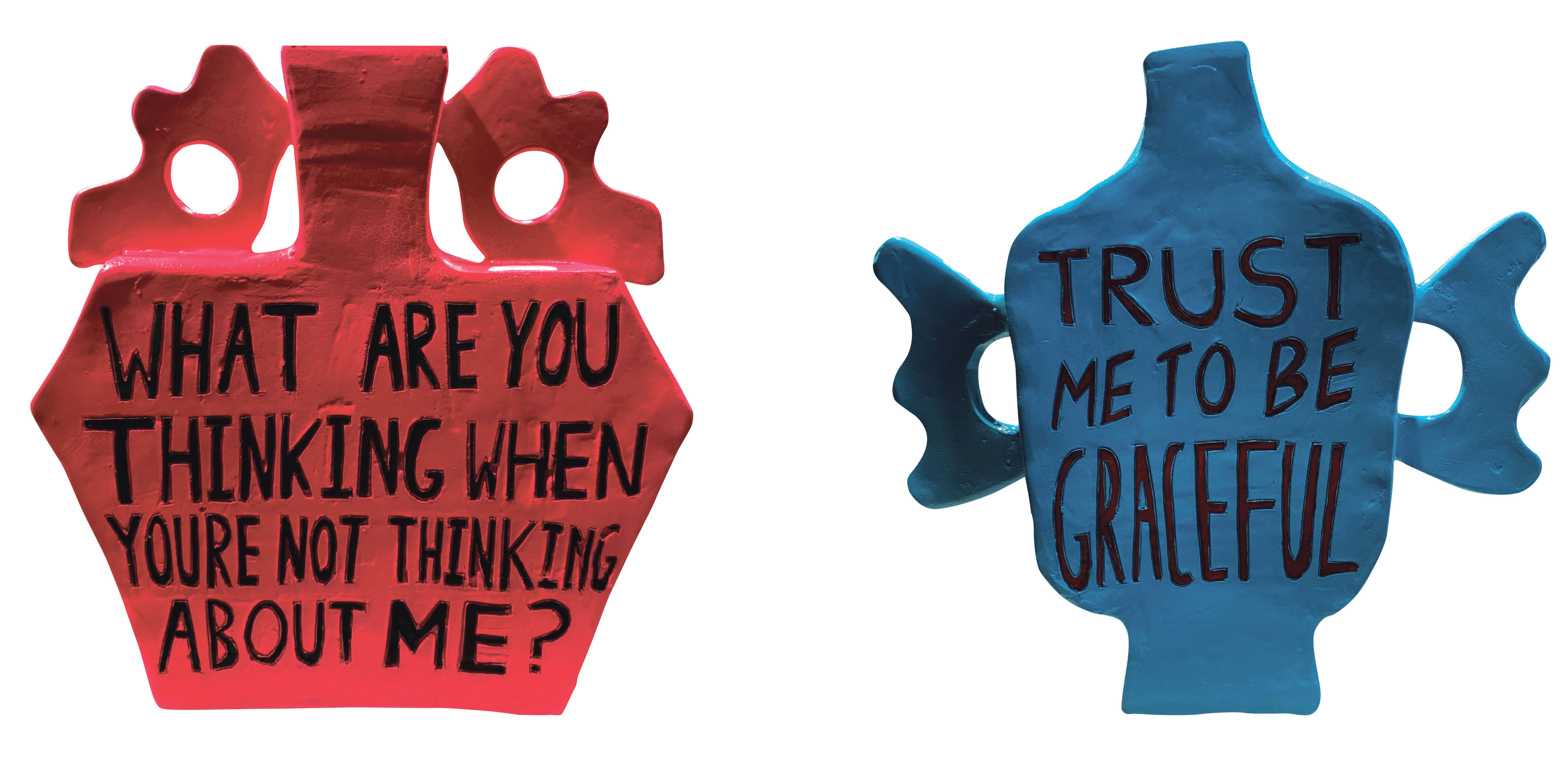
(Githen Coopoo, Digital Catalogue)
After Coopoo’s first solo exhibition, Structural Integrity, in December, every one of his hand-shaped ceramic vases embossed with pithy messages was sold. His work is fun but often startlingly vulnerable. These are his personal views on life, queer love and sex.
Many of Coopoo’s recent pieces were inspired by a long-distance relationship. He met his boyfriend, a sustainable politics student in New York City, on Instagram. “These pieces were a time stamp of six months. It’s about falling in love from a distance, having that love come to me and growing greater. Then having to see it go away again, and continuing to love each other from afar.”

(Githen Coopoo, Digital Catalogue)
In the collection, a red vase reads: “What are you thinking when you’re not thinking about me?” Another says: “I feel stable with you in my life.” He elaborates: “The rumours are true: I’m soft and I just want to be loved.”
A cobalt-blue vase bears the words: “Trust me to be graceful.” He laughs, saying: “I love that, because the vase is slightly lopsided, you see?”
Some of his words poke fun, too. One vase reads: “Yoga changed my life.” He explains: “You know, the kind of eccentric white woman who goes, ‘Oh my God, yoga! Eastern teachings!’”
Read in Daily Maverick: “Ben Orkin: On queer love and ceramic art”
Our conversation veers to a Cape Town yoga studio accused of cultural appropriation for hosting an “Indian food night”.
Coopoo nods. “Yes, it’s just too much. The problem is that it takes one aspect of a culture while ignoring all the rest, ignoring all the complexity.”
Structural Integrity, hosted at the Boschendal wine estate in Franschhoek, in collaboration with the Norval Foundation, a Cape Town art centre, showed Coopoo’s pieces in stark contrast to whitewashed manor walls, and Durban star photographer Zanele Muholi’s black-and-white self-portrait series, Somnyama Ngonyama (Hail, the Dark Lioness).
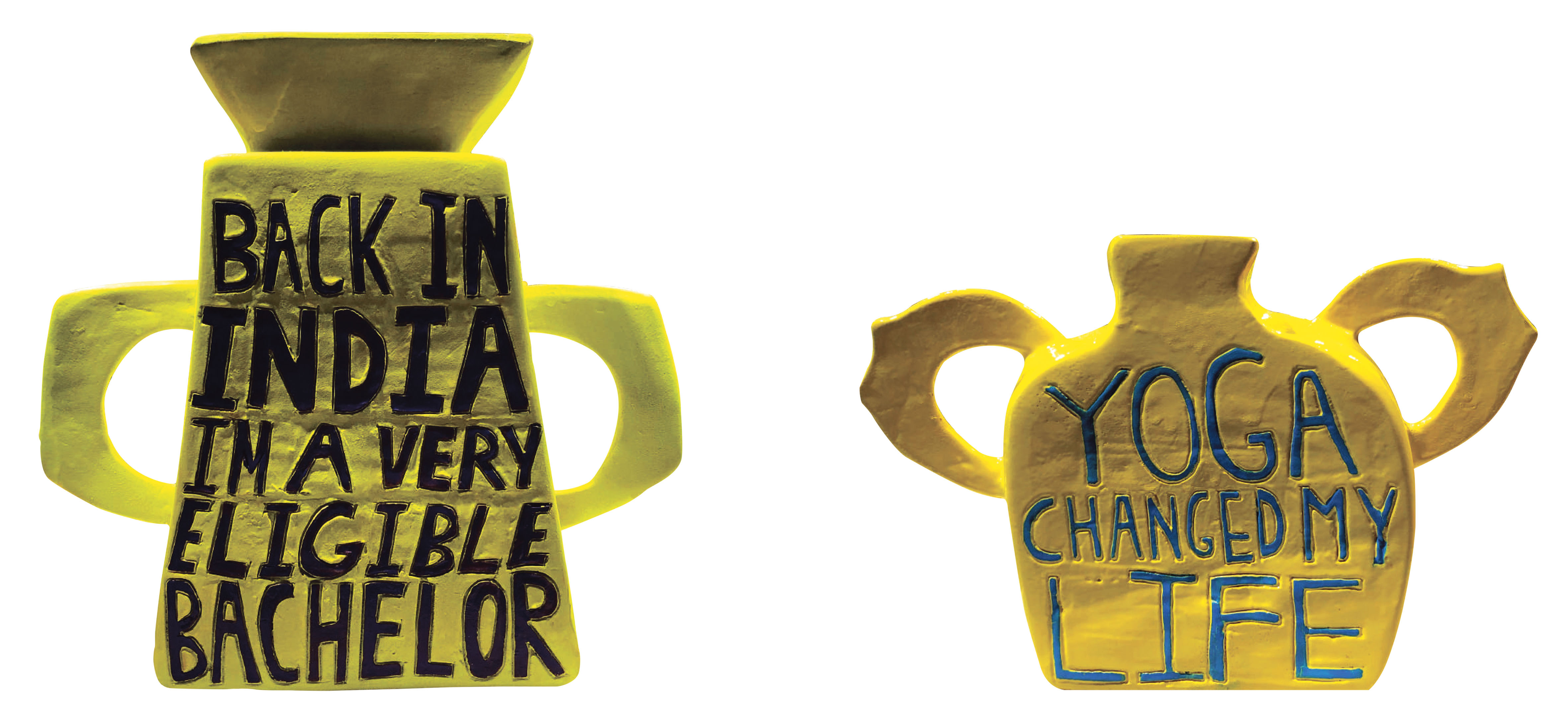
(Githen Coopoo, Digital Catalogue)
“Exhibiting with Muholi?” says Coopoo. “Oh my goodness. Incredible is not even the word. There’s a new show called Black Venus in the United States at the moment, which Muholi is a part of. It looks at the female black body in art. It’s all about bringing a semblance of identity and very simple face value to a whole community that has gone without agency, prior. It’s deeply political work, very powerful. I mean, you understand why they [Muholi] refer to themselves as an art activist.”
Coopoo majored in English and history at the University of Cape Town, after which he worked at the Zeitz Museum of Contemporary Art Africa (Mocaa), in Cape Town, in its fashion and costume curatorial department.
He continues: “I have a personal relationship with Muholi’s work because it was one of the first shows I hung when I was working at the Zeitz Mocaa.”
After being diagnosed with HIV, he left the museum. He says: “I think it was a very kind of stimulated environment – going out, partying, socialising with people, keeping up to date with work. And I just kind of spiralled, essentially.”
Holding his cup of tea, Coopoo’s demeanour appears relaxed.
What does his fashion say about him? “That I’m better than you,” he responds, laughing. “No, no, I’m kidding. What does my fashion say about me? It says that I’m not scared of embracing gender or the lack thereof, the blurring of it.”
He adds: “I think my physical body is very masculine. But when I open my mouth, you immediately understand from my cadence and from the way in which I speak that I’m an incredibly effeminate person, as well. And I’m really my most authentic self as a combination of those genders. I personally use the building blocks of masc [masculine] and fem [feminine] in my identity.”
Coopoo plans to continue making ceramic vases, handbags, tiles and jewellery, while working towards finding an artist’s residency in the US. DM168
This story first appeared in our weekly Daily Maverick 168 newspaper, which is available countrywide for R25.
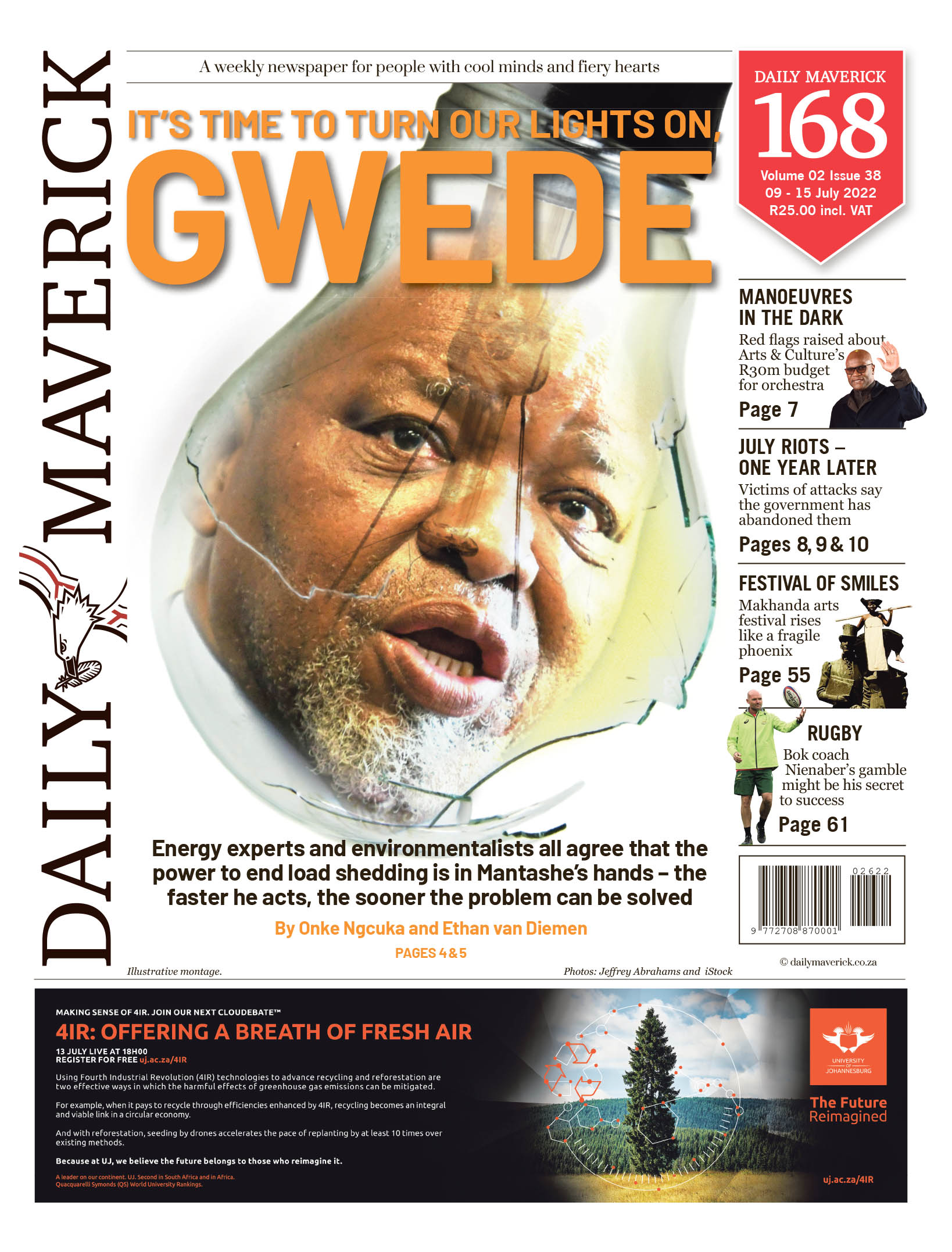

















 Become an Insider
Become an Insider
Comments - Please login in order to comment.